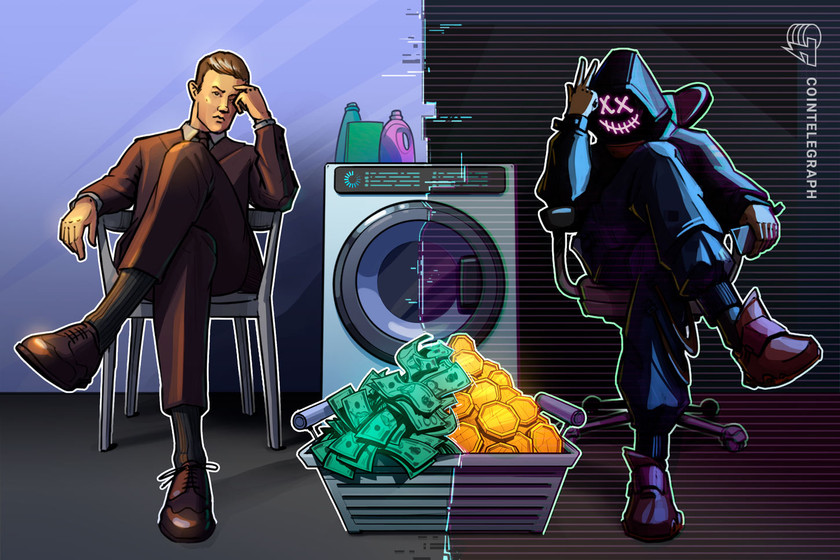
2019-2-1 00:35 |
Darknet markets are going as strong as ever, if Chainalysis data is to be believed.
In its latest Crypto Crime Report, published earlier this week, blockchain analytics firm Chainalysis reports that darknet market activity has nearly doubled throughout 2018. After a slump in late 2017 and early 2018 due to the closure of two major online marketplaces for illicit activity — AlphaBay and Hansa — volume has since almost completely recovered to early-2017’s all-time high levels, surpassing $600 million worth of bitcoin for the year.
“Law enforcement has been working hard to stop illicit activity on darknet markets, and there have been some notable successes like the closure of AlphaBay,” the report notes. “Overall, these markets continue to thrive, however, as participants simply move their business to other platforms and technologies.”
Whack-A-MoleDarknet markets, the online market places for illicit goods and services that operate on hidden services and use bitcoin (and sometimes altcoins like litecoin and monero) for payments, have been around in their current form since 2011, when Ross Ulbricht founded Silk Road.
Although this pioneering darknet market was shut down by law enforcement in 2013, others have since taken its place. What’s more, the size and volume of these markets have only grown over the years. According to Chainalysis data, trading volume at identified darknet markets was over $700 million dollars worth in 2017 — where Silk Road never accounted for more than $200 million a year.
The Silk Road’s biggest and best-known successor, other than Silk Road 2.0, may have been AlphaBay, with Hansa following closely behind. In the summer of 2017, both AlphaBay and Hansa joined in Silk Road’s fate, however, and were closed down by law enforcement. Silk Road 2.0 had already been shut down in 2014.
Yet, once again, in the greater scheme of countering darknet markets, this only proved to be a stop-gap solution. In what Chainalysis describes as “playing whack-a-mole with darknet markets,” alternative and new platforms took the place of the old, and after an initial drop, overall trading volume rebounded as well. Throughout 2018, this totaled over $600 million, Chainalysis estimates, with more than $2 million a day toward the end of the year.
“Darknet market activity has been remarkably resilient over the last few years, despite continued efforts by law enforcement to shut down illicit activities,” Chainalysis writes in its report. “When one darknet market closes, others pop up to take its place.”
Chainalysis points to the Russian-language Hydra as one of the main successors of AlphaBay, which has doubled its activity since the latter was closed in 2017. Other major darknet markets that are active today include Dream Market and Wall Street Market.
Bitcoin and Darknet MarketsWhile bitcoin is still the currency of choice on most darknet markets, Chainalysis does believe that this type of activity has come to constitute a much smaller share of total bitcoin usage over time. While up to 7 percent of transacted bitcoin value in 2012 and 2013 — the peak of the Silk Road — was related to darknet markets, this is now well below 1 percent, Chainalysis estimates.
The blockchain data analytics firm also found that the bitcoin price has little effect on its use for these kinds of illicit activities.
“Darknet market activity is relatively price inelastic; that is, you don’t see a drop in this type of activity when cryptocurrency prices fall. In fact, in 2018, when Bitcoin volumes dropped by 78%, darknet market activity nearly doubled,” the report notes.
This inelasticity is in large part because users of these markets often merely use bitcoin as a vehicle to move value around — not for speculative purposes. Consumers buy bitcoin with fiat currency on one end of the trade, and dealers sell the bitcoin for fiat currency on the other. Indeed, Chainalysis found that more funds were flowing to darknet markets toward the end of the week (as buyers move to purchase goods), while dealers generally move their bitcoin out on Mondays to cash in their proceeds.
Finally, Chainalysis describes how, as law enforcement is getting better at shutting down darknet markets, a new and potentially even more resilient model for darknet market activity is emerging. Moving away from centralized platforms, the analytics firm reports that an increasing amount of trading is taking place on encrypted messaging apps.
“Top law enforcement officials tell us that criminals are migrating increasingly to encrypted messaging apps including Telegram and WhatsApp to execute illegal transactions. When conducted through these apps, transaction activity is decentralized and person-to-person; there’s little risk that law enforcement will shut down the entire network by closing a website,” the report reads.
You can download the Chainalysis report here.
This article originally appeared on Bitcoin Magazine.
Similar to Notcoin - Blum - Airdrops In 2024
Darknet (DNET) íà Currencies.ru
|
|





